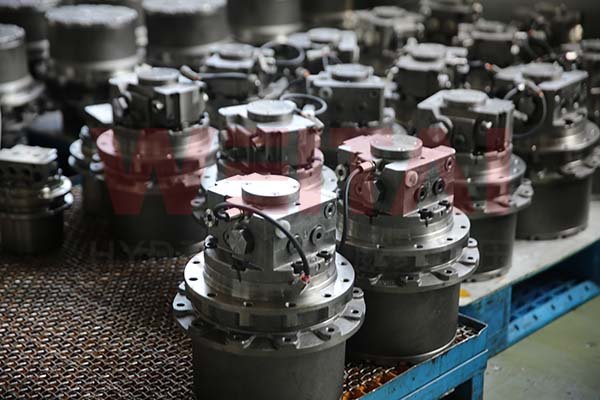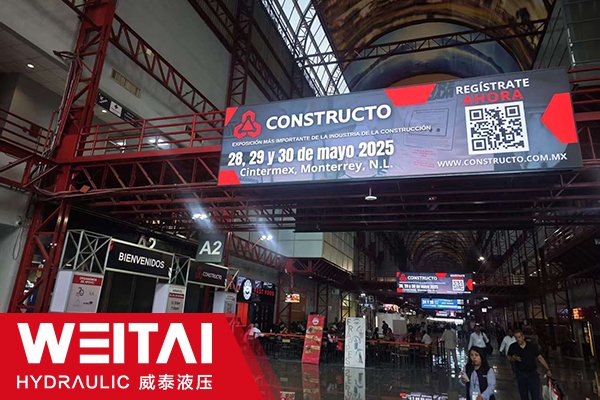Every crawler excavator has at least two final drives on it. So, the final drive is a crucial mechanical component that plays a vital role in power transmission. In this post, WEITAI Hydraulic will lead you to the answers to the 3 commonly seen questions about the final drive on excavator:
1. What is the final drive on excavator?
2. How to select an excavator final drive replacement?
3. What are the signs that a final drive on excavator needs to be replaced?
4. How to replace the hydraulic final drive on excavator?
Now let’s dive into it.
1. What Is a Final Drive on Excavator?
The final drive transfers power from the excavator’s engine to the tracks or wheels, enabling the machine to move. It consists of a gearbox and a set of gears or sprockets. The gearbox reduces the high-speed rotation of the engine output shaft to a slower, more powerful rotation suitable for driving the tracks or wheels.
The final drive provides the necessary torque to propel the excavator over various terrains. It must handle heavy loads and withstand the stresses and strains of continuous operation. It also helps in controlling the speed and direction of the excavator’s movement.
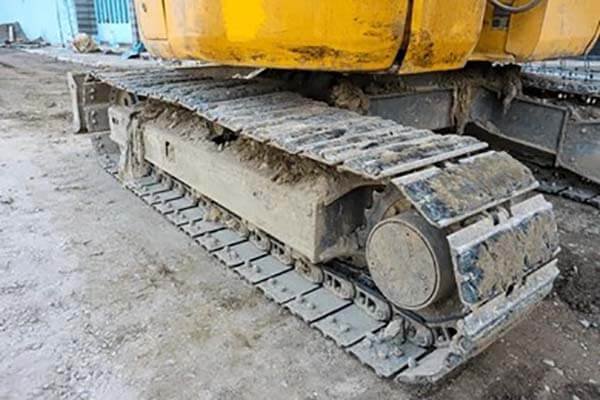
2. How to Select an Excavator Final Drive Replacement?
When selecting a replacement for an excavator final drive, the following factors need to be considered:
Compatibility With the Excavator Model
Ensure that the replacement final drive on excavator is specifically designed and compatible with the make and model of your excavator. Different excavator models may have different specifications and requirements for the final drive. Check the manufacturer’s specifications and part numbers to ensure a proper fit.
Quality and Durability
Look for a final drive from a reputable manufacturer known for producing high-quality and durable components. Read reviews, check warranties, and consider the brand’s reputation in the market. A reliable final drive will have better resistance to wear, tear, and damage, ensuring a longer service life.
Power and Torque Requirements
Consider the power and torque output needed for your excavator’s operations. The final drive should be able to handle the required power and provide sufficient torque to drive the tracks or wheels effectively. Check the specifications of the original final drive and choose a replacement with similar or improved power and torque capabilities.
Gear Ratio
The gear ratio of the final drive determines the speed and torque characteristics. Depending on your specific application and operating conditions, you may need a specific gear ratio. For example, if you require more speed, a higher gear ratio may be suitable, while a lower gear ratio may provide greater torque for heavy-duty digging or lifting.
Sealing and Lubrication
A good final drive should have effective sealing to prevent the ingress of dirt, dust, and moisture, which can cause damage to the internal components. Additionally, proper lubrication is essential for smooth operation and to reduce wear. Check the sealing and lubrication features of the final drive and ensure they meet your requirements.
Installation and Maintenance
Consider the ease of installation of the final drive replacement. Some final drives may come with detailed installation instructions or may require special tools or expertise for installation. Also, think about the availability of maintenance and repair services for the particular final drive model in case of future issues.
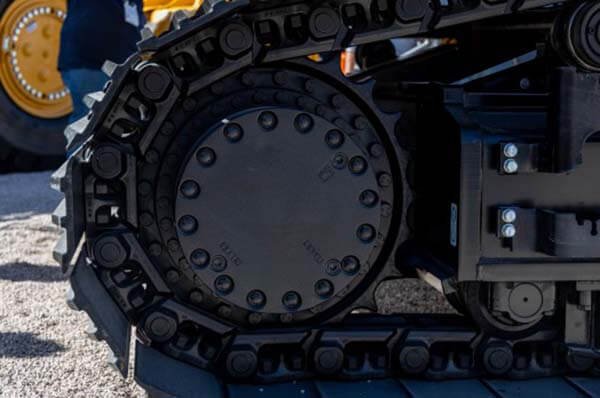
Cost
While cost is an important factor, it should not be the sole determining factor. Cheaper final drives may not offer the same quality and durability as more expensive options. Consider the overall value and long-term cost savings that a reliable and high-quality final drive can provide, including reduced downtime and potential repair costs.
Supplier Reputation and Support
Choose a supplier or distributor with a good reputation and reliable customer support. They should be able to assist in selecting the right final drive, offer technical advice, and handle any issues or concerns that may arise during or after the purchase.
It is advisable to consult with the excavator manufacturer, a professional mechanic, or a trusted supplier who has experience in dealing with excavator final drives. They can provide valuable guidance and help you make an informed decision based on your specific excavator and operating needs.
3. Signs That a Final Drive on Excavator Needs to Be Replaced
Several signs indicate a final drive on an excavator may need to be replaced:
Abnormal Noise
If you hear loud grinding, whining, or clunking noises coming from the final drive area, it could be a sign of internal damage. Worn gears, bearings, or damaged seals can cause these noises. For example, a grinding noise might suggest that the gears are no longer meshing properly.
Reduced Power or Slow Movement
If the excavator is moving slower than usual or has a significant loss of power, it could be due to a problem with the final drive. A weak final drive may not be able to transfer enough power to the tracks or wheels, resulting in sluggish performance. You might notice that the machine struggles to climb slopes or accelerate.
Leaking Oil
Oil leaks around the final drive are a clear indication of a problem. Leaking seals can allow oil to escape, which not only reduces lubrication but can also lead to contamination of other components. If you see puddles of oil under the excavator or notice oil dripping from the final drive housing, it’s time to inspect the seals and determine if replacement is necessary.
Excessive Heat
A final drive that is overheating can be a sign of trouble. Excessive heat can be caused by friction from worn parts, lack of lubrication, or a problem with the cooling system. You might feel a significant amount of heat coming from the final drive housing when you touch it. Overheating can lead to accelerated wear and potential failure if not addressed promptly.
Vibration or Shaking
Unusual vibrations or shaking when the excavator is in motion can indicate a problem with the final drive. Worn gears, damaged bearings, or an unbalanced final drive can cause these vibrations. You might feel the shaking in the operator’s cab or notice it in the movement of the machine.
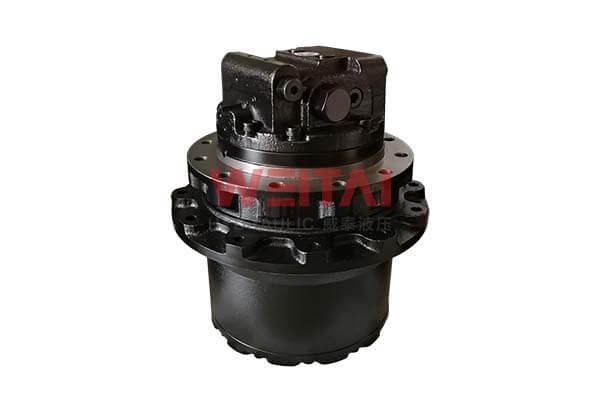
4. How to Replace the Hydraulic Final Drive on Excavator?
Prepare for replacement
- Gather tools: You will need tools such as a socket set, torque wrench, hydraulic jack, pry bar, and various wrenches.
- Select a replacement motor: Choose a motor that is compatible with your excavator model. You can select from genuine, OEM, or aftermarket motors. Each option has its pros and cons, so make sure to understand them before making a decision.
- Prepare the workspace: Ensure you have a clean, level, and well-lit work area with enough space to move around the excavator easily.
Remove the old hydraulic travel motor
- Raise and secure the excavator: Use a hydraulic jack to lift the excavator off the ground and place it on stands or blocks. Engage the parking brake and chock the wheels to prevent the excavator from moving.
- Remove the motor cover: Use a socket wrench to remove the bolts that hold the motor cover in place. Keep the bolts in a safe place as you will need to reuse them later.
- Disconnect the hydraulic lines: Loosen the fittings on the hydraulic lines connected to the motor using a wrench and carefully remove the lines. It is crucial to keep track of which lines go where, perhaps by labeling them, to ensure correct reattachment later.
- Remove the motor: Depending on the excavator model, you may need to use a hammer and punch to loosen the motor from its mount, or it may be possible to simply remove it by hand. Hold the motor firmly as you lift it out, as it can be quite heavy.
Install the new hydraulic travel motor
- Clean and inspect: Before installing the new motor, thoroughly clean all components and inspect them for any damage or defects. If any parts are damaged, replace them before proceeding38.
- Position the new motor: Carefully place the new motor in the correct position in the excavator. Align the mounting holes and shafts properly to ensure a correct fit.
- Reattach the hydraulic lines: Connect the hydraulic lines to the new motor, making sure to attach them to the correct ports according to the labels or your notes taken during disassembly.
- Install the motor cover: Place the motor cover back in position and secure it with the bolts using a socket wrench. Tighten the bolts to the specified torque wrench.
Final checks and adjustments
- Check for leaks: Start the excavator and carefully check for any hydraulic fluid leaks around the newly installed motor and its connections. If there are leaks, immediately turn off the engine and address the issue before proceeding.
- Test the motor: With the excavator still on stands or blocks, engage the travel controls to test the new motor at low speed. Check for smooth operation, proper rotation, and any unusual noises or vibrations.
- Lower the excavator: Once you are satisfied with the test results, carefully lower the excavator to the ground using the hydraulic jack.
- Recheck and adjust: After the excavator is on the ground, recheck all connections and make any final adjustments as necessary. Also, check the hydraulic fluid level and add more if needed.
5. At Last
In summary, the final drive on excavator is an essential part that ensures the machine’s mobility and enables it to perform its digging and construction tasks efficiently.
WEITAI is a professional manufacturer of hydraulic final drives and has more than 20 years of experience in exporting. The products from WEITAI are interchangeable with the world-famous brands, such as Parker and Rexroth, at a competitive price. Welcome to contact us if you want to know more about WEITAI and our products.

